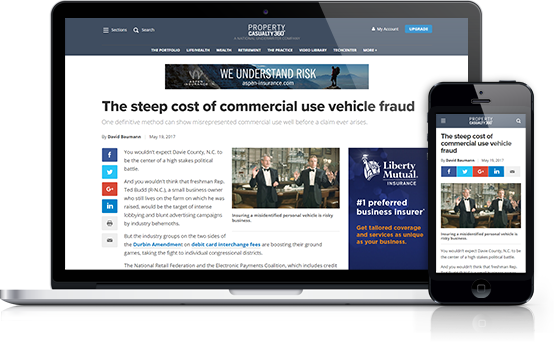Recommended Stories
Cyber insurance in 2024: Prices down, coverages expand
Selling cyber insurance is easier than it used to be. The hard part is aligning clients with the right terms and protection.
USAA, members donate nearly $3M for hurricane relief
Read about the carrier's major effort to assist impacted military families as well as other recent hurricane-related insurance news.
Most common renters insurance claims
Renters in Wyoming enjoy the lowest average renters insurance premiums in the U.S.
Resource Center

White Paper
Sponsored by One Inc
Insurer Cost Reduction & Operational Efficiency: ROI of Payments Part 1
Discover how digital payment solutions can help P&C insurers reduce costs and enhance operational efficiency, improving combined loss ratios in an increasingly challenging market.

White Paper
Sponsored by LexisNexis® Risk Solutions
Changing the Game: Innovation Trends in Commercial Insurance
New data reveals that commercial carriers are in the thick of a digital transformation. This white paper from LexisNexis® Risk Solutions examines key trends driving the adoption of automation in the commercial auto industry. Insights are according to top commercial carrier executives -- see what they mean for you!
PropertyCasualty360

Don’t miss crucial news and insights you need to make informed decisions for your P&C insurance business. Join PropertyCasualty360.com now!
- Unlimited access to PropertyCasualty360.com - your roadmap to thriving in a disrupted environment
- Access to other award-winning ALM websites including BenefitsPRO.com, ThinkAdvisor.com and Law.com
- Exclusive discounts on PropertyCasualty360, National Underwriter, Claims and ALM events

 Copyright © 2024 ALM Global, LLC. All Rights Reserved.
Copyright © 2024 ALM Global, LLC. All Rights Reserved.











